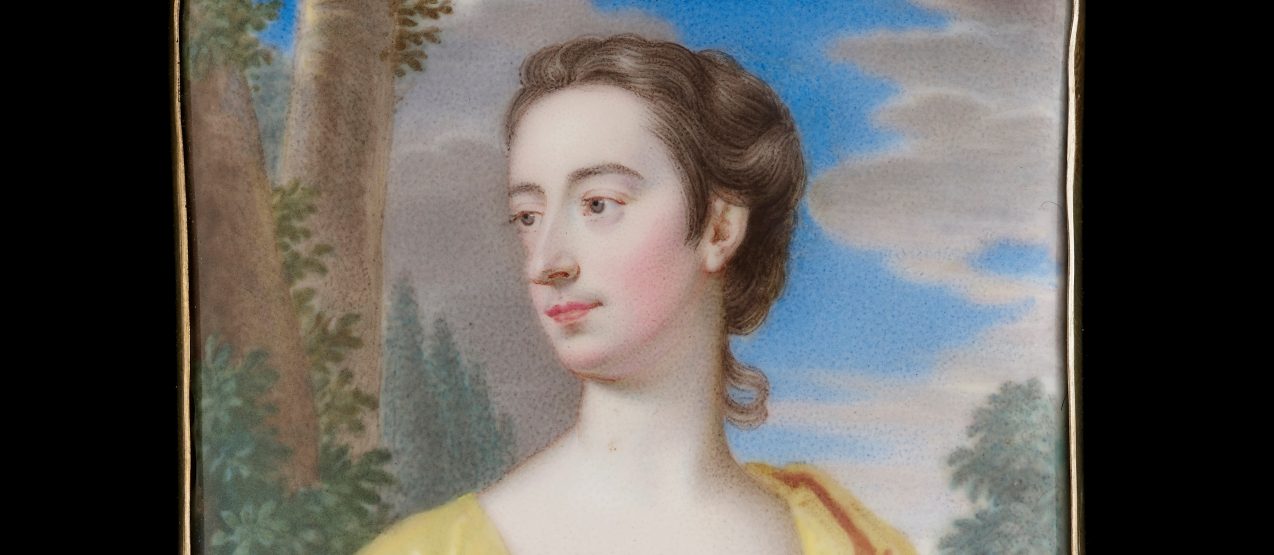Portrait enamels are painted on metal – usually gold or copper – and then fired in a kiln. The technique can be traced back to the Egyptians but was first introduced as a method for producing individual portrait likenesses in the early seventeenth century. The earliest example is a depiction of King Charles I of England by French artist Henri Toutin (1614-83), who, like many early portrait enamellers, also decorated watchcases. He was closely followed by Jean Petitot the Elder (1607-91), who is perhaps the best-known name linked with the technique.
Enamels by Petitot can be problematic for the buyer. The technique of enamelling was both time consuming and costly, yet large numbers of portrait enamels are attributed to Petitot. Some could be by his son, also called Jean, who painted in his style, others by the followers he inspired. It is also possible that a workshop produced enamels in his name. Works attributed to Petitot should be verified by an auction house specialist or independent expert to avoid confusion with the many nineteenth- and early twentieth-century copies.
In the eighteenth century enamels became extremely popular. As ivory became the main support for watercolour portrait miniatures, enamel was seen as a robust alternative to such delicate pieces. The leading enamel artist of this period was Christian Friedrich Zincke (c.1684-1767). His prolific output was particularly impressive given how difficult enamels are to produce, their layers of colour requiring several firings at different temperatures. For the collector this is one of the best periods from which to acquire enamels: there are plenty around, usually by named artists (Zincke’s success persuaded many others to try enamelling), and they often have fine gold cases. As so many examples have survived prices are lower than for watercolour miniatures and there is no concern with fading or mould damage.
Enamels can be difficult to date, as happily they do not deteriorate with age, but also the difficulty of the technique meant that enamels were copies of paintings rather than from life, so the date of the sitter’s costume or hairstyle sheds little light. Enamels did, however, grow in size over the years, from around 4-5cm in height in the seventeenth and eighteenth centuries to around 25cm in the nineteenth century, due to a refinement of the technique that allowed firing without cracking. Very few enamels of the seventeenth and eighteenth centuries are signed on the front and it can be difficult to access the reverse of those in sealed gold cases. Much emphasis is therefore placed on dating from the technique and frame.
The nineteenth-century enamel market was dominated by the Cornish-born artist Henry Bone (1755-1834), whose beautiful works, predominantly copies after oil paintings were much larger than those of his contemporaries and were clearly designed to be hung on the wall rather than worn. Enamels also served as jewellery, however. Queen Victoria, for example, gave bracelet-mounted enamel portraits of herself to the women who attended her at her wedding. Although artists increasingly signed their work at this time, dating is largely reliant on costume and casing.
Despite the resilience of the medium, enamels can suffer damage. In many ways they are similar to porcelain and will shatter if dropped or crushed. Often damage has occurred in the firing process when fine cracks appear or soot becomes ingrained in the surface. Chips can sometimes be found on the edges of an enamel from having been cased. It is advisable to avoid any type of damage as it is very difficult and costly to restore enamel, and however well done the piece is forever compromised.
It is important to appreciate and admire the technical challenges of the enamelling process, if the result may be a less expressive portrait than a watercolour miniature. Their colouration – much brighter than their subtle watercolour counterparts – is remarkable in that it has not changed since the day it was applied. Few other types of portrait can be said to look the same as the day they were painted. The stable nature of these small works of art also means they can be a good investment, with no concerns of deterioration. Naturally, the value of portrait enamels is subject to changes in taste, but since the seventeenth century they have been collected and appreciated for the skill of the artist and the insight into the fashion and beauty of their day.
By Emma Rutherford, Consultant at Philip Mould & Co.


